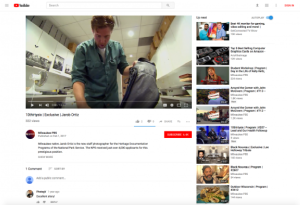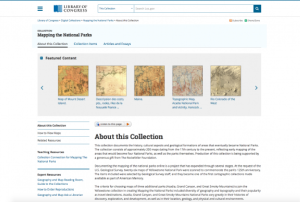History of U.S. National Parks
Back to Top
|
 |
|
Your Call: The History of Native Americans and National Parks
|
Social studies |
|
The U.S. national parks have been lauded as "America's Best Idea." However, as journalist, historian, and English scholar Philip Burnham points out, the establishment of the National Park Service (NPS) depended on the displacement of Native American communities from their land. In this 2016 episode of "Your Call," a broadcast of San Francisco's KALW, Rose Aguilar interviews Burnham, the author of Indian Country, God's Country: Native Americans and National Parks, about the oft-overlooked history of Native Americans and national parks. During the interview, Burnham addresses the histories of Yellowstone, Death Valley, and Yosemite and examines the Antiquities Act: the 1906 law that allows the U.S. president to proclaim certain sites to be national lands and monuments. As Burnham notes, the establishment of early national parks rested on the myth that those lands were "worthless" and essentially untouched by previous communities. In reality, Native communities had shaped and preserved those lands for years. In addition, Burnham and Aguilar discuss how U.S. national parks have historically addressed or ignored this aspect of history and how indigenous communities have organized to raise awareness about these issues. [MMB] |
|





|
|
 |
|
Theodore Roosevelt Center: Digital Library
|
Social studies |
|
Although it was Woodrow Wilson who signed into law the 1916 act that created the National Park Service, Theodore Roosevelt is the U.S. president that most associate with the creation of the national parks. During his presidential tenure, Roosevelt passed the 1906 Antiquities Act and oversaw the creation of Crater Lake, Wind Cave, and Mesa Verde National Parks, in addition to Sullys Hill National Game Preserve and Platt National Park (now the Chickasaw National Recreation Area). The Theodore Roosevelt Center at Dickinson State University is dedicated to "preserving the legacy of America's 26th president" through a number of projects, including the creation of a digital library. As of this write-up, the Theodore Roosevelt Digital Library hosts dozens of materials related to national parks and reserves, including maps, photographs, correspondence, speeches, and more. Visitors may conduct a text search of this extensive collection in the advanced search section of the website. In addition, visitors interested in learning more about Theodore Roosevelt and national parks may want to check out the conservation section in the TR Encyclopedia. [MMB] |
|





|
|
 |
|
National Parks: America's Best Idea: Search and Explore
|
Social studies |
|
In 2009, PBS broadcasted Ken Burns's six-part documentary series National Parks: America's Best Idea. Almost a decade later, PBS's companion website continues to host a wealth of materials about the history of U.S. national parks, including this searchable collection of over 800 multimedia documents. This collection includes newspaper articles, historic photographs, correspondence, and clips from the documentary (which can be viewed with Adobe Flash). Visitors are invited to browse these images by park (from Arcadia to Zion), by era, or by person (featuring photographer Ansel Adams, artist Chiura Obata, reporter Juanita Greene, and many others). As a whole, this collection offers a wealth of material for teaching and learning about the history of national parks in the United States. [MMB] |
|





|
|
 |
|
99% Invisible: Manzanar
|
Social studies |
|
In the 1960s, Warren Furutani and Victor Shibata decided to travel to Manzanar: a former internment camp in Owen Valley, California where 110,000 Japanese-American citizens had been incarcerated during World War II. Furutani's parents had been incarcerated at an internment camp and the pair were hoping to learn more about a chapter of U.S. history that had been missing from their textbooks. To their disappointment, they were unable to learn much about the realities of Japanese-American internment at the site. In December 1969, the pair led 150 individuals on a pilgrimage to Manzanar. Also leading the trip was Sue Kunitomi Embrey, who had spent part of her childhood in Manzanar. Together, Furutani, Shibata, and Embrey formed the Manzanar Committee and campaigned for the former internment camp to be designated as a national historic site. When the U.S. government granted this distinction to the camp in 1992, the committee's intentions for Manzanar were to preserve the realities of the camp so that present-day visitors could learn about this chapter of U.S. history. In this episode of the podcast 99% Invisible, producer Emmett Fitzgerald interviews Furutani about his work to ensure that the injustice of Japanese-American internment not be erased from public memory. Fitzgerald also speaks with Bruce Embrey, son of the late Sue Kunitomi Embrey, and to Alisa Lynch, a historic interpreter at Manzanar. This powerful episode demonstrates the important role that national parks and historic sites play in honoring and preserving U.S. history, including the history of injustice. [MMB] |
|





|
|























